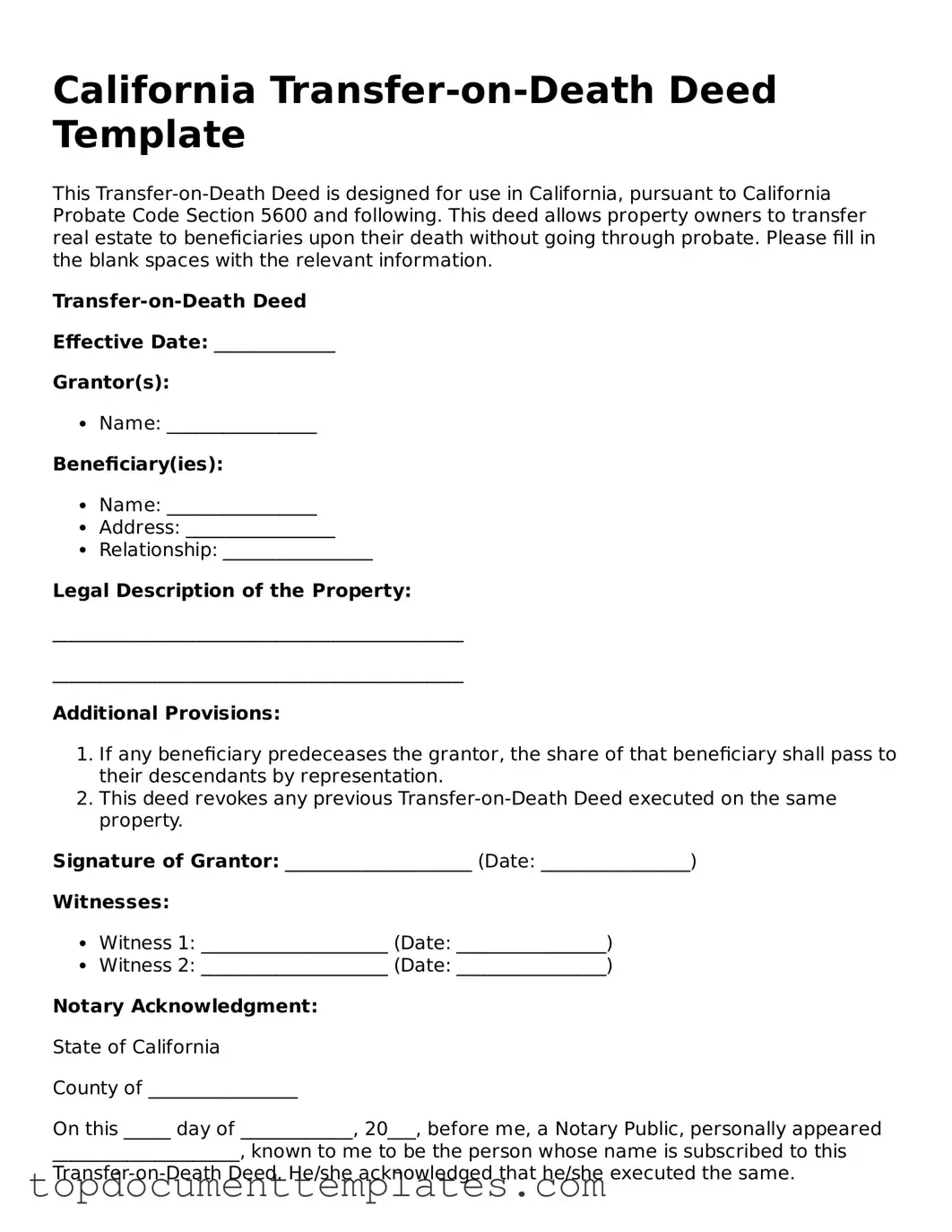In the state of California, the Transfer-on-Death Deed (TOD Deed) serves as a vital tool for property owners seeking to simplify the transfer of real estate upon their passing. This legal instrument allows individuals to designate one or more beneficiaries who will automatically receive ownership of the property without the need for probate, thereby streamlining the process and minimizing potential disputes among heirs. By filling out and recording a TOD Deed, property owners can retain full control of their assets during their lifetime, ensuring that their wishes are honored after their death. This deed is particularly beneficial for those who wish to avoid the often lengthy and costly probate process. Additionally, the TOD Deed provides a level of flexibility, as it can be revoked or altered at any time prior to the owner's death, allowing for adjustments as family dynamics or personal circumstances change. Understanding the nuances of this form is essential for anyone considering its use, as it can significantly impact the future of one’s estate and the well-being of loved ones.
